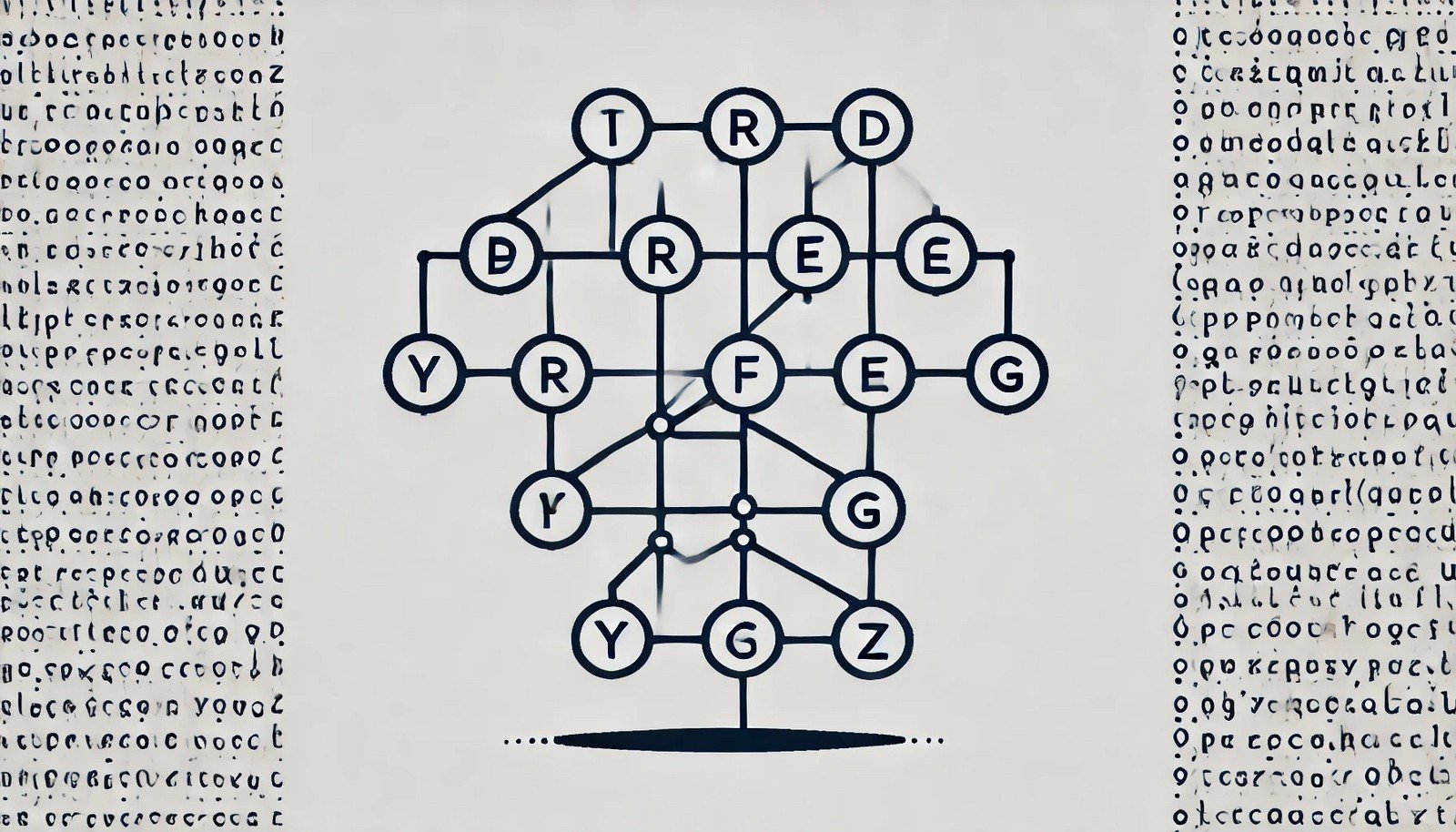Trie Data Structure
 (Representational Image | Source: Dall-E)
(Representational Image | Source: Dall-E)
Quick Navigation:
- Trie Data Structure Definition
- Trie Data Structure Explained Easy
- Trie Data Structure Origin
- Trie Data Structure Etymology
- Trie Data Structure Usage Trends
- Trie Data Structure Usage
- Trie Data Structure Examples in Context
- Trie Data Structure FAQ
- Trie Data Structure Related Words
Trie Data Structure Definition
A Trie (pronounced "try") is a tree-based data structure that stores strings in a way that enables fast retrieval. Each node in a Trie represents a single character of the stored strings. It is primarily used for search operations like autocomplete and spell checking, where efficiency is critical. Tries offer O(L) time complexity for search, insertion, and deletion operations, where L is the length of the word.
Trie Data Structure Explained Easy
Think of a Trie as a family tree for words. Each branch represents letters in the alphabet. If you want to check if a word exists, you follow the branches letter by letter until you reach the end. If you find a full word, it means it exists in the tree; if not, it doesn't! It’s like how you would use a dictionary to look up a word one letter at a time.
Trie Data Structure Origin
The concept of the Trie data structure was first introduced by René de la Briandais in 1959 as a way to improve search efficiency. Later, Edward Fredkin coined the term "Trie," derived from the word "retrieval."
Trie Data Structure Etymology
The word "Trie" originates from "retrieval," highlighting its primary purpose—efficient data retrieval. It is sometimes referred to as a prefix tree because it organizes words by their prefixes.
Trie Data Structure Usage Trends
Tries are extensively used in modern applications such as search engines, predictive text input, IP routing, and word games like Scrabble. With the increasing demand for fast text-based search and storage, Tries have seen a resurgence in use, especially in autocomplete features and lexical analysis tools.
Trie Data Structure Usage
- Formal/Technical Tagging:
- Data Structures
- Computer Science
- Algorithms - Typical Collocations:
- "Trie node"
- "prefix search"
- "Trie-based autocomplete"
- "Trie implementation in Python"
Trie Data Structure Examples in Context
- Autocomplete features on search engines rely on Tries to suggest words as you type.
- Spell checkers use Tries to quickly find whether a word exists in the dictionary.
- Tries are utilized in network routing to manage IP addresses efficiently.
Trie Data Structure FAQ
- What is a Trie?
A Trie is a tree-based data structure that helps in storing and searching strings efficiently. - What are the main operations in a Trie?
The main operations are insertion, search, and deletion of words. - How is a Trie different from a binary tree?
A Trie is specifically designed for string manipulation and retrieval, while a binary tree is more general-purpose. - Where are Tries commonly used?
Tries are commonly used in autocomplete systems, spell checkers, and network routers. - Why is a Trie called a prefix tree?
It organizes words by their prefixes, making it easy to retrieve words with the same prefix. - What is the time complexity of a Trie?
The time complexity for search, insert, and delete operations is O(L), where L is the length of the word. - Can a Trie store non-string data?
Tries are primarily designed for string data, but with modifications, they can store other types. - Is a Trie memory-efficient?
It can be memory-intensive compared to other structures if not implemented carefully, but it optimizes search time. - How are Tries used in word games?
They quickly check word existence and suggest valid words based on given prefixes. - What are some real-world applications of Tries?
They are used in search engines, predictive text, IP routing, and dictionary applications.
Trie Data Structure Related Words
- Categories/Topics:
- Data Structures
- Computer Science
- Algorithms
Did you know?
Tries are crucial in genome sequencing for efficient storage and searching of genetic data. Researchers rely on them to find patterns in DNA sequences quickly.
PicDictionary.com is an online dictionary in pictures. If you have questions or suggestions, please reach out to us on WhatsApp or Twitter.Authors | Arjun Vishnu | @ArjunAndVishnu

I am Vishnu. I like AI, Linux, Single Board Computers, and Cloud Computing. I create the web & video content, and I also write for popular websites.
My younger brother, Arjun handles image & video editing. Together, we run a YouTube Channel that's focused on reviewing gadgets and explaining technology.



Comments powered by CComment